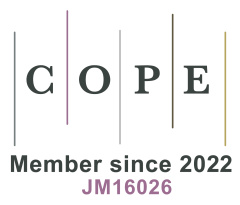Optimization of college students’ track and field sprinting technique based on biomechanical analysis
Abstract
Sprinting performance is affected by a variety of biomechanical factors, and optimizing the techniques in all phases is crucial for improving performance. Based on biomechanical analysis, this study used experimental methods such as high-speed camera, motion capture system, force platform and electromyography to collect and analyze data on stride length, stride frequency, ground reaction force and muscle activation pattern of sprinters. The results showed that optimizing the starting posture, acceleration gait matching, uniform running economy and anti-fatigue ability in the closing phase can effectively improve the sprinting performance. Through the targeted technical optimization strategy, sprinters were able to significantly reduce speed loss and enhance the stability in the sprinting phase. This study can provide scientific guidance for sprinting special training, sports biomechanics research and sports injury prevention, and provide a more accurate theoretical basis for sprinting technology optimization.
References
1. Brezniak N. The time to change the orthodontic biomechanics is now. American Journal of Orthodontics and Dentofacial Orthopedics. 2025; 167(2): 139-140. doi: 10.1016/j.ajodo.2024.09.015
2. Singh A, Ghuge K, Patni Y, et al. Experimental Biomechanics of Neonatal Brachial Plexus Avulsion Injuries Using a Piglet Model. Bioengineering. 2025; 12(1): 91. doi: 10.3390/bioengineering12010091
3. Peng H, Chao Z, Wang Z, et al. Biomechanics in the tumor microenvironment: from biological functions to potential clinical applications. Experimental Hematology & Oncology. 2025; 14(1). doi: 10.1186/s40164-024-00591-7
4. Büttner C, Lisee C, Bjornsen E, et al. Bilateral waveform analysis of gait biomechanics presurgery to 12 months following ACL reconstruction compared to controls. Journal of Orthopaedic Research. 2024; 43(2): 322-336. doi: 10.1002/jor.26001
5. Xu Z, Xu W, Zhang T, et al. Mechanisms of tendon-bone interface healing: biomechanics, cell mechanics, and tissue engineering approaches. Journal of Orthopaedic Surgery and Research. 2024; 19(1). doi: 10.1186/s13018-024-05304-8
6. Shan G. Research on Biomechanics, Motor Control and Learning of Human Movements. Applied Sciences. 2024; 14(22): 10678. doi: 10.3390/app142210678
7. Li J, Si J, Xue C, et al. Seeking orderness out of the orderless movements: an up-to-date review of the biomechanics in clear aligners. Progress in Orthodontics. 2024; 25(1). doi: 10.1186/s40510-024-00543-1
8. Needles BJ, Grabowski AM. When does technology become too advanced for track and field? Journal of Applied Physiology. 2024; 137(3): 650-650. doi: 10.1152/japplphysiol.00334.2024
9. Ladokhin AS. Track and Field of the Journal of Membrane Biology. The Journal of Membrane Biology. 2023; 256(4-6): 299-300. doi: 10.1007/s00232-023-00298-6
10. Lin W, Wang D, Cui H, et al. Retraction Note: Application effect analysis of the test system of track and field web course based on software programming method. Cluster Computing. 2022; 26(S1): 85-85. doi: 10.1007/s10586-022-03873-z
11. Kim KJ, An B, Kim T, et al. Exploration of Strategy for 400m Relay in Track and Field in Preparation for 2002 Tokyo Olympics: View on Changed Rules. Sports Science. 2020; 38(1): 211-220. doi: 10.46394/iss.38.1.20
12. Bezodis NE, Walton SP, Nagahara R. Understanding the track and field sprint start through a functional analysis of the external force features which contribute to higher levels of block phase performance. Journal of Sports Sciences. 2018; 37(5): 560-567. doi: 10.1080/02640414.2018.1521713
13. Li DL, Liu MX, Zheng YJ, et al. The Relationship Between Serum Biochemical Variables and Corneal Biomechanics Measured by Corvis ST Among Healthy Young Adults. Translational Vision Science & Technology. 2025; 14(2): 19. doi: 10.1167/tvst.14.2.19
14. Sánchez-Gómez R. Advances in Foot Biomechanics and Gait Analysis. Applied Sciences. 2025; 15(3): 1299. doi: 10.3390/app15031299
15. Lou X, Zhong H, Fan X, et al. Low-intensity laser alleviates cartilage degradation in a rat model of knee osteoarthritis by improving the biomechanics of joint muscles and cartilage. Acta Mechanica Sinica. 2024; 41(11). doi: 10.1007/s10409-024-23656-x
16. Taiar R. Editorial: Biomechanics, Health, Disease and Rehabilitation—2nd Edition. Bioengineering. 2025; 12(2): 121. doi: 10.3390/bioengineering12020121
17. Chen J. Incorporating biomechanics as a key evaluation metric for organoids. Biofabrication. 2025; 17(2): 023001. doi: 10.1088/1758-5090/adb802
Copyright (c) 2025 Author(s)

This work is licensed under a Creative Commons Attribution 4.0 International License.
Copyright on all articles published in this journal is retained by the author(s), while the author(s) grant the publisher as the original publisher to publish the article.
Articles published in this journal are licensed under a Creative Commons Attribution 4.0 International, which means they can be shared, adapted and distributed provided that the original published version is cited.



 Submit a Paper
Submit a Paper
